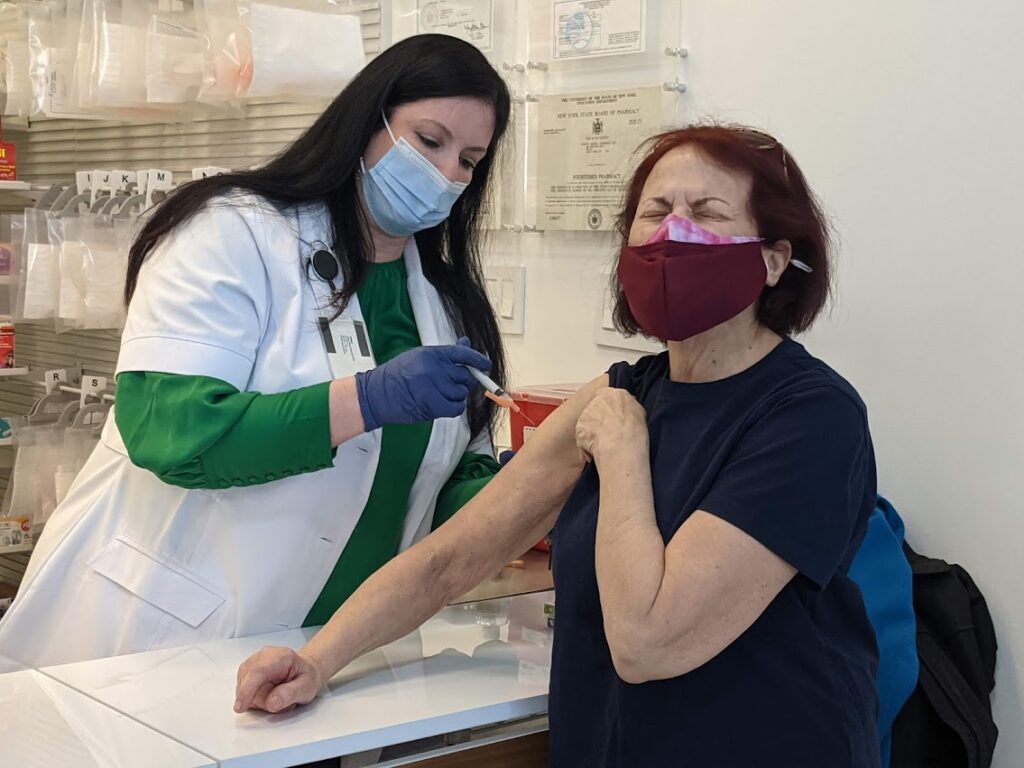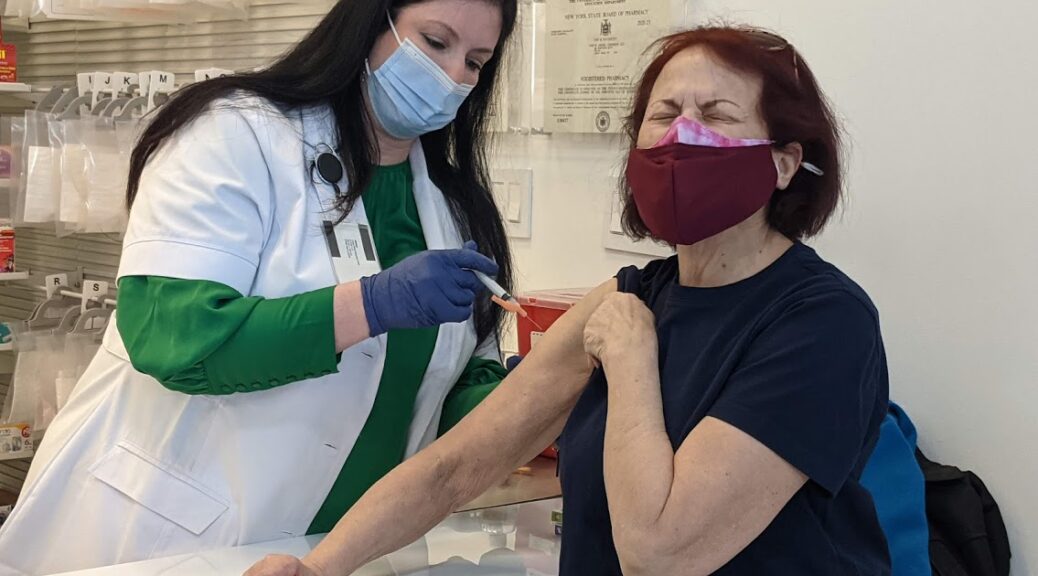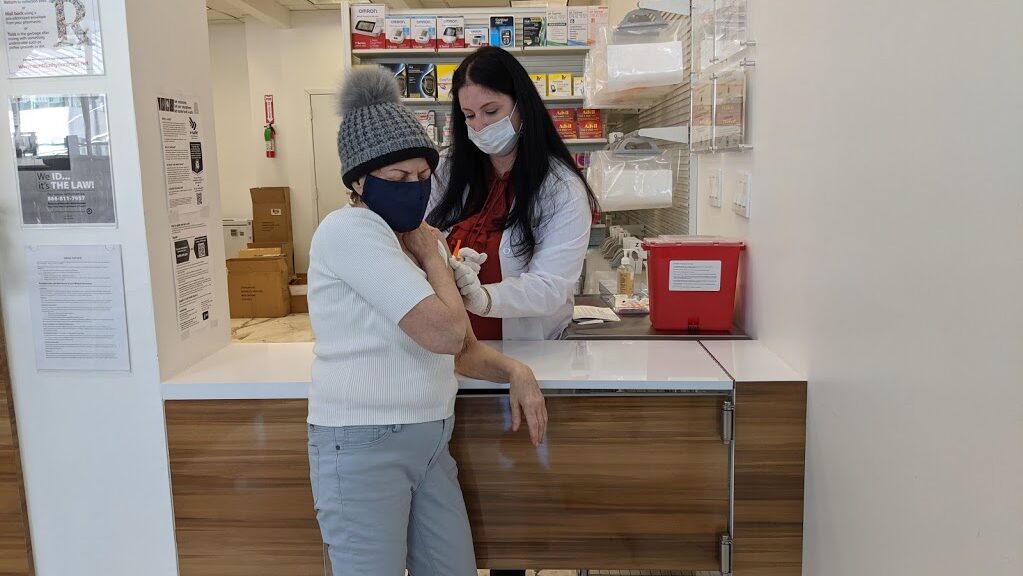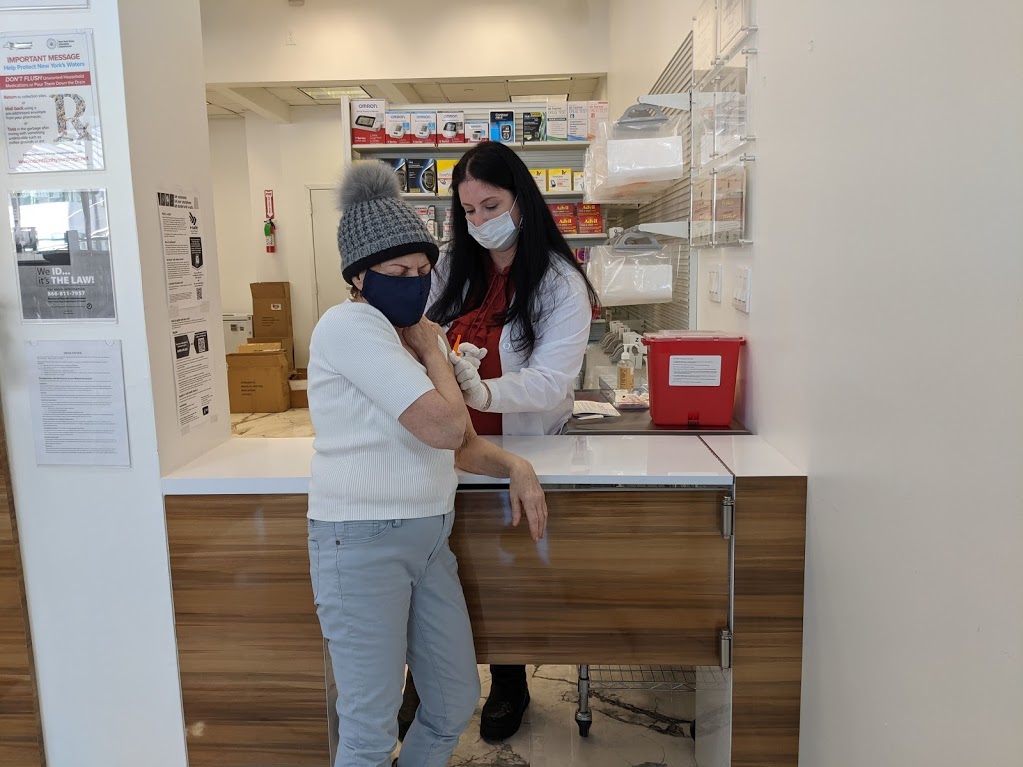
As President Biden just took action to expand access to the Affordable Care Act – amid calls by Republicans once again to repeal it if they regain control of Congress – it is important to keep in mind that 75 million Americans have contracted COVID-19, and millions of them are experiencing the effects of Long- OVID, and thus have pre-existing conditions. Obamacare, as the Affordable Care Act is known, protects people with pre-existing conditions as well as ends lifetime caps on coverage and keeps children on their parents’ insurance until the age of 26. There were 100 million Americans with pre-existing conditions before the coronavirus.
Biden has said that health care is a right, not a privilege, and has taken several actions – besides expanding access (some 30 million now take advantage of affordable Obamacare) – to improve health care. That includes mounting the massive vaccination program that has saved millions of lives, testing and new treatments; he is trying to reduce the cost of prescription drugs, particularly insulin (from $4000 month to $35/month), and launched a $5 billion research program to address some of the worst killers including cancer and Alzheimer’s. Now the Biden Administration is accelerating the whole-of-government effort to prevent, detect and treat Long COVID. Here’s a fact sheet from the White House–Karen Rubin/news-photos-features.com
The U.S. has made tremendous progress in our fight against COVID-19. Today, Americans have the tools they need to protect against and treat the virus. At the same time, millions of individuals continue to experience prolonged illness from COVID-19, known as “Long COVID.” Many report debilitating, lasting symptoms that can persist long after the acute COVID-19 infection has resolved, and can manifest in anyone who has had COVID-19. These symptoms often look like those associated with other chronic medical conditions.
The Administration has mobilized to advance our nation’s understanding of Long COVID and its associated conditions, promote high-quality care for patients, and help individuals access supportive services—especially for those from communities disproportionately affected by the pandemic. The President’s National COVID-19 Preparedness Plan makes clear that we are committed to accelerating these efforts, with additional support and resources from Congress.
President Biden issued a Presidential Memorandum directing the Secretary of Health and Human Services (HHS) to coordinate a new effort across the federal government to develop and issue the first-ever interagency national research action plan on Long COVID. The effort will advance progress in prevention, diagnosis, treatment, and provision of services, supports, and interventions for individuals experiencing Long COVID and associated conditions. The Presidential Memorandum also directs HHS to issue a report outlining services and supports across federal agencies to assist people experiencing Long COVID, individuals who are dealing with a COVID-related loss, and people who are experiencing mental health and substance use issues related to the pandemic. This report will specifically address the long-term effects of COVID-19 on high-risk communities and efforts to address disparities in access to services and supports.
Today’s announcement builds on the Administration’s ongoing work to implement the recommendations of the Presidential COVID-19 Health Equity Task Force. It also builds on a number of additional actions the Administration is taking to support the millions of Americans experiencing Long COVID and their families by delivering high-quality care and expanding access to services and supports, as well as actions to advance efforts to detect, prevent, and treat Long COVID.
These actions include:
Delivering high-quality care for individuals experiencing Long COVID: As a complex condition that can affect multiple organ systems, Long COVID may require care and coordination across multiple medical specialties. The Administration recognizes that the COVID-19 pandemic has resulted in new members of the disability community and has had a tremendous impact on people with disabilities. The Administration will continue to center the voices of patients in this work and is advancing efforts to deliver high-quality, high-value care to people experiencing Long COVID—especially communities hardest-hit by COVID-19. In collaboration with patients, payers, and providers across the care continuum, the Administration will accelerate and disseminate clinical support and best practices to promote coordinated, integrated care models and expand access to high-quality care in communities across the country.
- Launching Centers of Excellence and promoting evidence-based care models: Through the Agency for Healthcare Research and Quality (AHRQ), the President’s Fiscal Year 2023 (FY23) budget will invest in a multi-year initiative, beginning with $20 million in FY23, to investigate how health care systems can best organize and deliver care for people with Long COVID, provide telementoring and expert consultation for primary care practices, and advance the development of multispecialty clinics to provide complex care. This work would fund institutions across the country that bring together leading researchers and care providers across the full care continuum – including hospitals, health centers, long-term care services and supports, and other providers – and promote the implementation of new evidence into care, especially for disproportionately affected populations. As information emerges on effective Long COVID treatments and care, AHRQ in partnership with the Centers for Disease Control and Prevention (CDC), Food and Drug Administration (FDA), Substance Abuse and Mental Health Services Administration (SAMHSA), and National Institutes of Health (NIH)—in collaboration with clinical leaders, professional societies, and the national academies—will build on existing interim clinical guidance to get providers and patients the care information they need.
- Expanding and strengthening Long COVID clinics: Across the country, 18 Department of Veterans Affairs (VA) facilities have already established Long COVID care programs, consolidating multidisciplinary clinical expertise in locations veterans know and trust. The VA will expand on the success of these programs by establishing additional Long COVID programs and robust referral and follow-up systems across its facilities. These programs, and others established by hospitals and health systems across the country, are serving as a source of rapid learning and long-term research on best practices and new therapies, along with the broader provider, patient, and scientific community. The Office of the Assistant Secretary for Health (OASH) will launch the Health+ project to gain insights into the experiences and patient journeys of people living with Long COVID and associated conditions, to help inform high-quality care and contribute to standardized best practices at Long COVID clinics.
- Promoting provider education and clinical support: The Administration will continue to work with providers to advance our recognition and understanding of Long COVID and associated conditions, including by sharing culturally competent information and resources through platforms like the Centers for Medicare & Medicaid Services (CMS) Medicare Learning Network and Indian Health Service (IHS) provider education and partnerships with academic institutions. The Administration will also launch targeted clinician and medical coder education on the ICD-10-CM code (U09.9) effective last year to support diagnosis, billing, and tracking of Long COVID. To further support equitable access to high-quality care in communities hard-hit by the pandemic, the Administration, through the Health Resources and Services Administration (HRSA), will continue to build sustainable telementoring programs and networks in rural and medically underserved communities. HHS will additionally convene experts across the country to provide recommendations to our nation’s providers on best practices in the identification and management of the mental and behavioral health disorders associated with Long COVID.
- Bolstering health insurance coverage for Long COVID care: The Administration is working to make Long COVID care as accessible as possible. CMS has clarified that, under the American Rescue Plan (ARP) requirement that state Medicaid and Children’s Health Insurance Program (CHIP) programs cover treatments for COVID-19, states must also cover treatments and therapies for Long COVID. Additionally, the essential health benefits (EHB) provided by the Affordable Care Act (ACA) generally provide coverage for the diagnosis and treatment of COVID-19, including Long COVID, though coverage and cost-sharing details vary by plan. CMS has also expanded Medicare coverage for pulmonary rehabilitation services for Long COVID care beginning in the 2022 Physician Fee Schedule. Moving forward, the Administration will continue to assess opportunities to enhance access to care for Long COVID and its associated symptoms through Medicare, Medicaid, insurance marketplace coverage, and other options. The Office of Personnel Management (OPM) will also increase awareness of Long COVID among Federal Employee Health Benefit (FEHB) Program carriers—serving over 8.2 million federal employees, retirees, and their families—and call on them to closely monitor care for individuals with Long COVID. OPM will additionally enhance enrollee education on plans’ coverage of the assessment and treatment of Long COVID and associated symptoms such as respiratory illness and chronic fatigue.
Making services and supports available for individuals experiencing Long COVID: The Administration continues to work to understand Long COVID and its impact across populations, including how it interacts with other medical and physical conditions. Individuals with Long COVID may need help doing things they did by themselves in the past, or may need accommodations in their daily activities based on changes in their abilities. In addition to the Long COVID guidance package released during the 31st anniversary of the Americans with Disabilities Act (ADA), the Administration is raising awareness of Long COVID as a potential cause of disability, and strengthening services and supports available for individuals experiencing Long COVID.
- Raising awareness of Long COVID as a potential cause of disability: To protect individuals with Long COVID from discrimination, HHS and the Department of Justice (DOJ) have released guidance explaining that some individuals with Long COVID may have a disability under civil rights laws, including the ADA, Section 504 of the Rehabilitation Act, and Section 1557 of the Affordable Care Act. The Department of Education (ED) also released a resource to support children, students, educators, schools, service providers, and families—providing information about Long COVID as a disability and about schools’ and public agencies’ responsibilities for the provision of services and reasonable modifications to children and students for whom Long COVID is a cause of a disability. The Administration for Community Living (ACL) and the HHS Office for Civil Rights (OCR) are continuing to disseminate resources to help people with Long COVID understand if they have a disability, educate people on their rights, and to inform organizations of their obligations.
- Translating research into inclusive disability policy: Through the Social Security Administration’s close collaboration with research agencies and other entities, the Administration will continue to clarify and update policy guidance as the science develops to support inclusive disability policy and claims adjudication processes through the Social Security Disability Insurance (SSDI) and Supplemental Security Insurance (SSI) programs for individuals experiencing Long COVID. This includes building on its Emergency Message on Evaluating Cases with COVID-19 and continuing to be responsive to findings from the medical and scientific communities about the types of evidence that can help establish impairments and identify functional limitations linked to Long COVID, when appropriate. Additionally, ACL and the Department of Labor (DOL) continue to elevate experiences of individuals with disability due to Long COVID, including on return-to-work.
- Connecting people with the resources they need: The Administration will help connect people with Long COVID to information, resources, and service and support options. This includes incorporating multilingual information and support into the CDC-INFO call center, Disability Information and Access Line (DIAL), and call centers run by CMS—which together receive over 3 million calls each month—and providing Long COVID-specific trainings for customer service representatives. Through ACL’s DIAL and Eldercare Locator, the Administration will also continue to connect older adults and individuals with disabilities to critical local services, such as transportation to receive care. IHS will additionally train business office and benefit administrator staff to assist Tribal communities in navigating Long COVID. SAMHSA will additionally collaborate with stakeholders to advance our understanding of the mental health effects of COVID-19 and promote high-quality mental and behavioral health care services for those who need it.
- Strengthening support for workers experiencing Long COVID: The Equal Employment Opportunity Commission (EEOC) and DOL recently released guidance on access to equitable employment opportunities for people experiencing the impact of COVID-19 and the symptoms of Long COVID. To protect workers experiencing Long COVID, DOL, in coordination with the EEOC, will continue supporting enforcement of the ADA, and other federal disability related nondiscrimination requirements for all workers. DOL’s Job Accommodation Network (JAN) also helps individuals with Long COVID remain in or return to their jobs. This includes both resources to empower workers to request and negotiate accommodations, as well as resources for employers on effective accommodation strategies. Additionally, through the legal networks funded by ACL, the Administration will continue to support legal assistance related to Long COVID to older adults and people with disabilities.
Advancing the nation’s understanding of Long COVID: Robust data and information are essential to our fight against the COVID-19 pandemic and its long-term effects. The Administration will support and accelerate research to understand, prevent, diagnose, treat, advance non-discrimination for, and otherwise support individuals with Long COVID. This includes efforts to better identify and characterize Long COVID – including with respect to its frequency, severity, duration, and risk factors; account for its impact on hard-hit and high-risk populations; and better understand its symptoms—including anxiety and depression, fatigue, shortness of breath, difficulty concentrating, heart palpitations, disordered sleep, chest and joint pain, and headache. These symptoms may look like those associated with other chronic medical conditions—including dysautonomia, myalgic encephalomyelitis/chronic fatigue syndrome (ME/CFS), and mast cell activation syndrome (MCAS). In collaboration with patients, academia, providers, and other stakeholders, the Administration will continue to take critical steps to advance our scientific understanding in order to prevent, detect, and treat Long COVID.
- Launching the first-ever National Research Action Plan on Long COVID: Today, President Biden issued a Presidential Memorandum directing the Secretary of Health and Human Services to coordinate a new effort across the federal government to develop and issue the first-ever interagency national research action plan on Long COVID. The effort will advance progress in prevention, diagnosis, treatment, and provision of services, supports, and interventions for individuals experiencing Long COVID. This effort, building on the landmark Researching COVID to Enhance Recovery (RECOVER) Initiative and other initiatives across the federal government, will advance our understanding of Long COVID, foster the development of new treatments and care models, and inform services, support, and interventions for individuals experiencing Long COVID.
- Accelerating enrollment into the RECOVER Initiative: Last year, the NIH launched its $1.15 billion RECOVER Initiative to advance our understanding of and ability to predict, treat, and prevent Long COVID. To help catalyze progress, the Administration will accelerate the enrollment of approximately 40,000 individuals with and without Long COVID into RECOVER’s longitudinal observational arm—in addition to advancing RECOVER’s pathobiology studies, EHR studies, and clinical trials. Equity remains at the center of the Administration’s COVID-19 response efforts, and RECOVER will focus on enrolling individuals across all ages, races, ethnicities, and socioeconomic statuses—including pregnant people, individuals with disabilities, and those from the communities hardest hit by the pandemic. RECOVER will also continue to bolster its patient-centered approach, leveraging its National Community Engagement Group—comprised of patient representatives across its pathobiology task forces and executive, steering, and oversight committees—to enable patients to shape research design and execution, listen for community feedback, and learn from patients’ first-hand experience.
- Making further investments to advance Long COVID research and surveillance: Building on the $50 million CDC has already invested, the President’s FY23 budget has requested $25 million to answer key questions on the characteristics, risk factors, underlying mechanisms, and health impacts of Long COVID—through clinician engagement, electronic health data analyses, and grant funding. This includes through the Innovative Support for Patients with SARS-CoV-2 Infections Registry (INSPIRE) study by CDC, which will follow nearly 6,000 individuals nationwide for up to 18 months, and other dedicated research in Tribal and other hard-hit, high-risk communities.
- Leveraging the power of federal data: With its robust, national health care databases, the U.S. Department of Veterans Affairs (VA) offers a wealth of information on the risks and burdens of COVID-19. Using data from over 600,000 individuals with COVID-19, the VA will continue advancing its work to assess the different health impacts of COVID-19 over time. This includes building on its already published analyses relying on EHR data on kidney, cardiovascular, and mental health outcomes in people who have gotten COVID-19, through a national study surveying infected Veterans and uninfected controls about persistent symptoms. Additionally, the Department of Defense (DOD) has launched the Epidemiology, Immunology, and Clinical Characteristics of Emerging Infectious Diseases with Pandemic Potential (EPICC) study of Military Health System beneficiaries to help determine effects of COVID-19 and define clinical strategies to address them. This foundational study will not only support our military medical readiness but also our broader understanding of the disease.
- Identifying workplace interventions that help keep individuals connected: To inform the development of inclusive disability policies and benefits, the DOL is scaling its work to identify early intervention strategies for workers who experience injuries or illnesses, including Long COVID, when working. DOL is expanding beyond its initial pilot study—to Kansas, Kentucky, Minnesota, Ohio, and Vermont—to help workers find alternatives as they decide whether to stay at or return to work following an illness like Long COVID.



